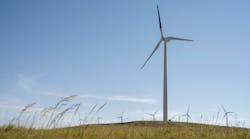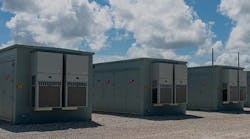PacifiCorp and its research partners are conducting a study to evaluate the effects of painting a single wind turbine blade in black on 36 different turbines to reduce collision risks to birds flying near the wind turbines.
The Glenrock, Wyoming, study is supported through a public-private partnership including:
• U.S. Geological Survey
• Renewable Energy Wildlife Institute
• U.S. Fish and Wildlife
• Invenergy
• U.S. Department of Energy
• NextEra Energy Resources
• Oregon State University
The team has painted 28 blades and will complete the remaining eight in 2024.
The study will focus on the effect of painted blades on fatality rates for eagles, diurnal (active in daytime) non-eagle birds and bats.
Experts assume of both eagles and diurnal non-eagle birds to recognize painted blades, resulting in higher turbine avoidance. The study also suggested that bats do not notice painted blades and there will be no change in bat collision fatalities at turbines with painted blades.
According to a recent research in Norway, nearly 72% decline was observed in turbine blade-related bird collisions as a result of painting one turbine blade in black.
“The research team has produced a very innovative approach, allowing them to accurately estimate the benefits of painted turbine blades in the hope of minimizing impacts on eagles and other diurnal birds,“ said Shilo Felton, senior scientist at the Renewable Energy Wildlife Institute. “PacifiCorp’s facility allows us to study this interaction at an impressive scale, with 36 painted turbines and even more control turbines to include in the experiment.”
“If proven effective, the manipulation could reduce bird fatalities at wind facilities that would be realized over decades, with minimal maintenance, infrastructure or other constraints required of current technologies,” said Travis Brown, director of compliance and permitting for PacifiCorp.
The U.S. is in full support to replicate the Norway study with more treated turbines to confirm if similar results are achievable at other wind energy sites.
The Oregon state legislature had considered Oregon State University to identify a project to evaluate the effectiveness of painted blades on wildlife collisions.


